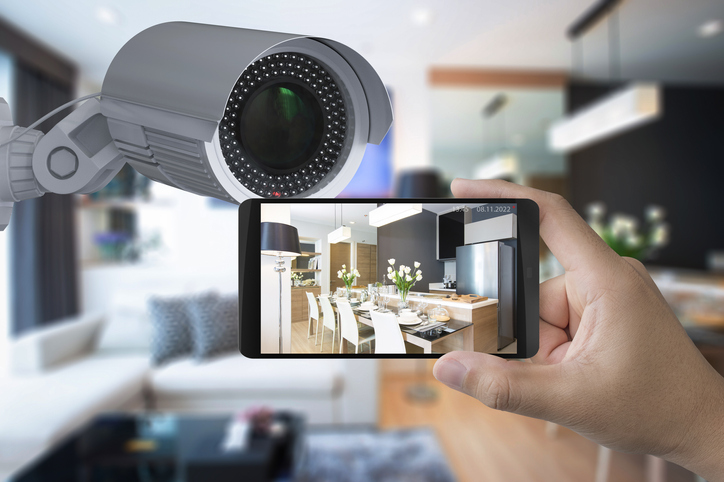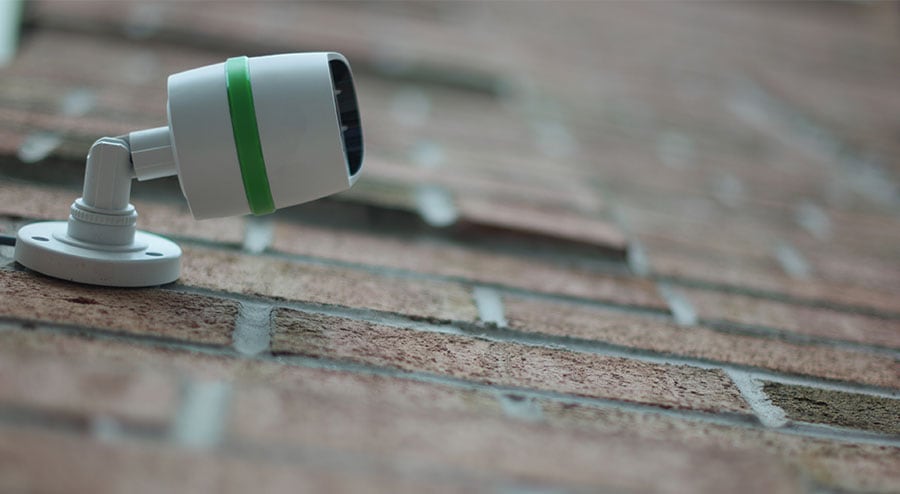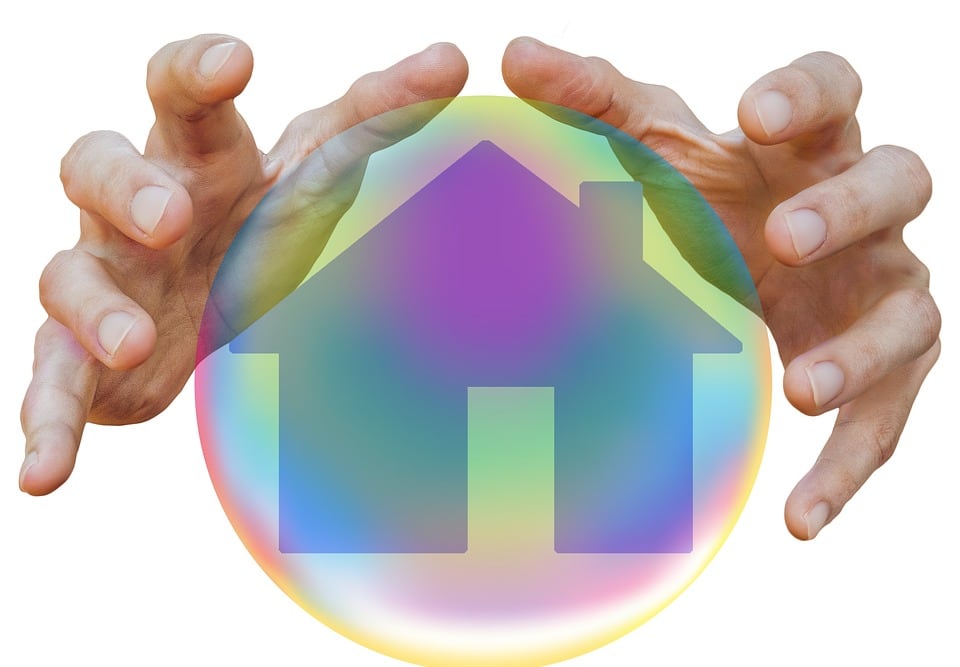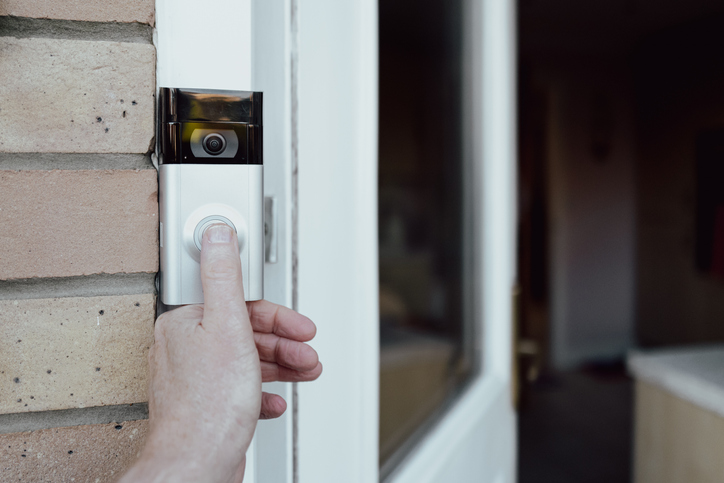With rising concerns over personal safety and property protection, there has been a significant increase in demand for home security cameras. These cameras have become important tools for homeowners who aim to safeguard their homes, belongings, and loved ones. This surge in demand is driven not only by their affordability and increased accessibility but also the technological advancements that have made these cameras more effective and easier to use.

Home security cameras serve a dual purpose – deterrence and monitoring. They act as a deterrent by making potential intruders aware that their actions are likely to be recorded, thus reducing the chances of an attempted break-in. As monitoring tools, they provide homeowners with the ability to keep an eye on their property in real time, even from remote locations. This function is especially useful for identifying culprits in the unfortunate event of a break-in, assisting the authorities in their investigations, or simply monitoring daily activities around the house.
Table of Contents
- Understanding Home Security Cameras – An Overview
- Home Security Camera Features and Their Importance
- The Role of AI and Facial Recognition in Modern Security Cameras
- The Deterrent Effect – How Security Cameras Prevent Break-ins
- The Financial Side of Home Security Cameras
- Legal Aspects and Considerations of Installing Home Security Cameras
- Security Camera Maintenance and Upgrades
- Storage and Data Security in Home Security Cameras
- Integrating Security Cameras with Other Home Security Systems
- Take Away
Home security cameras have become common instruments in contemporary home security management, providing a layer of protection that enhances peace of mind for homeowners. They form an important line of defense, making homes less attractive to potential intruders while offering invaluable monitoring capabilities.
Understanding Home Security Cameras – An Overview
Home security cameras are surveillance devices designed to monitor activities and capture footage within a specified area. They serve as a home’s third eye, adding an extra layer of protection to your property. They are often networked to a recording device or IP network and can be accessed remotely via smartphones or computer systems.
There are several types of security cameras to consider with the first distinction being between wired and wireless systems. Wired cameras, like those from Hikvision or Lorex, are connected to your home’s electrical system and can offer reliable, high-quality footage. Wireless cameras, like Arlo Pro 3 or Ring Stick Up Cam, use Wi-Fi to transmit footage, offering more flexibility in installation and the ability to place them virtually anywhere.
The next differentiation is indoor versus outdoor cameras. Indoor cameras, like the Google Nest Cam Indoor, are often smaller, less conspicuous, and designed to work well in low-light, indoor conditions. Outdoor cameras, such as the Arlo Ultra 2, are typically more robust, weather-resistant, and equipped with night vision to capture clear footage in the dark.
When choosing a home security camera, key features to look out for include the camera’s resolution, with 1080p being a standard for good quality footage, and higher resolutions like 2K or 4K providing even greater detail. Look for systems with two-way audio to communicate with people near the camera, motion detection for alerts, night vision for clear footage in low light, and wide field-of-view for broader coverage. A model like the Ring Floodlight Cam offers these features, providing comprehensive security coverage for your home. Keep in mind, that quality and features often correlate with cost, so you’ll need to balance your security needs with your budget.
Home Security Camera Features and Their Importance
Resolution is an important feature to consider for a good home security camera. High-resolution cameras like the 4K UHD options from brands like Arlo and Lorex provide sharp and detailed images that make it easier to identify people or details in the footage. For example, the Lorex 8MP 4K IP Bullet Professional Grade Security Camera boasts an ultra-high-definition resolution that delivers crisp images, providing crucial detail in your security footage. However, it’s worth noting that higher-resolution cameras generally come at a higher cost and require more storage for the larger files they produce.
Night vision and motion detection also enhance the effectiveness of home security cameras. Night vision allows cameras, such as the Ring Spotlight Cam, to capture clear footage even in complete darkness, ensuring round-the-clock security. On the other hand, motion detection, available in cameras like the Google Nest Cam IQ, provides real-time alerts when movement is detected within the camera’s field of view, allowing for immediate attention to potential security risks.
Audio features enhance the utility of security cameras. Two-way audio allows homeowners to communicate with the person in front of the camera, whether it’s to greet a friend or warn a potential intruder. This feature is common in several modern security cameras, including the Arlo Pro 3. Furthermore, some cameras also include sound detection, which can alert homeowners to specific sounds like alarms or broken glass. All these features work together to create a more secure and reactive home security system.
The Role of AI and Facial Recognition in Modern Security Cameras
Artificial intelligence (AI) and facial recognition have enhanced the functionality and convenience of home security cameras as they offer more precision and personalization in identifying potential threats.
AI technology, integrated into many contemporary security camera systems, enhances motion detection by distinguishing between different types of movement. Cameras like the Google Nest Cam IQ Indoor use AI to differentiate between people, animals, and cars, minimizing false alarms and providing more relevant alerts. In a similar vein, some security cameras, like the Netatmo Smart Outdoor Camera, employ AI to recognize specific sounds—like breaking glass or alarms—to alert homeowners of possible intrusions.
Facial recognition technology improves the capabilities of modern security cameras by allowing them to identify known individuals. For example, the Tend Insights Lynx Indoor camera uses facial recognition to distinguish between family members, friends, and strangers. When a familiar face is recognized, the system might not send an alert, or it might send a different kind of alert compared to when a stranger’s face is detected. This technology offers a high degree of customization and can significantly enhance home security by alerting homeowners of unfamiliar faces in their property.
These advances, however, often come at a higher cost with high-end models like the Google Nest Cam IQ Indoor retail for over $300, so homeowners will need to weigh these enhanced features against their budget constraints.
The Deterrent Effect – How Security Cameras Prevent Break-ins
The presence of surveillance equipment like security cameras serves as a visible deterrence to potential intruders. When potential intruders see a security camera, like a prominently displayed Ring Floodlight Cam or a Nest Cam IQ Outdoor, they understand they’re likely to be recorded. This increases the risk of identification and subsequent arrest, making the property a less appealing target.
The choice between visible and hidden security cameras depends on the specific goals of the homeowner. Visible cameras serve as an overt deterrent, signaling to potential intruders that the property is monitored. They are often used in exterior locations and can feature prominent designs or even additional lighting. Hidden cameras, like those found in the Blink Mini line, offer stealthy surveillance, capturing events without anyone’s knowledge. This can be particularly useful in cases where visible cameras have been tampered with or avoided.
However, there are potential downsides to each. While visible cameras deter most would-be intruders, they could potentially be targeted for vandalism or damage to impair the security system. Conversely, hidden cameras don’t offer the same deterrence factor as their visible counterparts; they’ll capture events unnoticed, but won’t actively discourage criminal activity. Hence, a blend of both visible and hidden cameras, matched to the specific needs and layout of the property, might offer the most comprehensive protection.
The Financial Side of Home Security Cameras
Investing in a comprehensive home security system involves an upfront cost for the hardware and potentially ongoing costs for storage and monitoring services. The expense can vary widely depending on the brand, number of cameras, resolution, and additional features. A simple indoor camera like the Wyze Cam v3 costs under $50, while a high-end outdoor camera with advanced features, like the Arlo Ultra 2, can run several hundred dollars. Add in costs for multiple cameras, any necessary installation services, and optional cloud storage or professional monitoring subscriptions, and the total for a complete system can easily reach into the thousands. However, one can also find mid-range systems like the EufyCam 2C 2-Cam Kit, which offers good value for money with its balance of cost, features, and performance.
Furthermore, installing a home security camera system could potentially lead to financial savings in the form of reduced home insurance premiums. Many insurance companies offer discounts to homeowners who take proactive steps to improve the security of their homes, as it reduces the likelihood of theft and damage. While the exact amount of the discount varies, it can range from 5% to 20% depending on the insurer and the comprehensiveness of the security system installed. It’s advisable to check with your insurance provider to understand how much you could potentially save by installing a home security system.
Legal Aspects and Considerations of Installing Home Security Cameras
Installing home security cameras comes with certain legal responsibilities and the specific laws and regulations vary widely by location and country. There are common principles, however, for example, it is typically legal to record video on your own property. However, if the cameras capture areas beyond your property boundaries—such as your neighbor’s home or public spaces—privacy issues could potentially arise. It’s essential to position cameras to respect the privacy of others and avoid disputes or legal issues.
Another legal consideration is whether you can record audio. In many jurisdictions, it’s illegal to record private conversations without the consent of all parties involved. As some security cameras, like the Ring Stick Up Cam, have audio recording features, it’s important to understand your local laws before activating this functionality. It may also be necessary to display signs informing visitors that surveillance is in use, which can be another factor in the deterrent effect of visible cameras.
Security camera footage can indeed be used as legal evidence in court, provided it meets certain criteria. The footage must be relevant to the case, and it must have been legally obtained without infringing on privacy rights. For example, footage from a Nest Outdoor Camera showing a burglar breaking into your home would likely be admissible in court. However, the legal landscape is complex and varies by jurisdiction, so it’s always advisable to seek professional legal advice in these matters.
Security Camera Maintenance and Upgrades
Home security cameras require regular maintenance including physical upkeep, such as cleaning the camera lens to ensure clear images. Outdoor cameras, such as the Ring Spotlight Cam, may require more frequent cleaning due to exposure to the elements. During inclement weather, checking the cameras for any water or snow obstruction would also be necessary. Beyond physical care, keeping your security cameras’ software up-to-date is important as regular software updates from manufacturers often include important security patches and feature enhancements.
As for upgrades, it is more up to your discretion. The lifespan of a security camera can range from 4 to 6 years on average, depending on the quality of the camera, its exposure to outdoor elements, and how well it’s maintained. However, advancements in technology can sometimes outpace this timeframe. For instance, if higher resolution cameras or cameras with AI features like facial recognition, such as the Google Nest Cam IQ, become commonplace, you might consider upgrading sooner. It’s also worth upgrading if the camera is no longer receiving software updates from the manufacturer, as this can pose a security risk. Overall, considering the balance between cost, evolving technology, and the specific security needs of your home will guide the decision on when to upgrade your home security cameras.
Storage and Data Security in Home Security Cameras
Many modern security cameras, such as the Arlo Pro 3, use cloud storage, which means the footage that is taken is then stored on a remote server and can be accessed via the internet. This method provides numerous benefits. First, it eliminates the need for local storage devices, such as DVRs or NVRs, that have limited capacity. Second, if a burglar were to steal or damage your camera, the footage would remain safe in the cloud. Lastly, cloud storage allows easy access to your video feed from anywhere and at any time, often through a mobile app.
Data transmission security should be a concern, especially for wireless security cameras. These devices send data over your home Wi-Fi network, making it crucial to secure the network. Most top-tier security camera manufacturers employ robust security measures, such as end-to-end encryption, to ensure data remains confidential and secure during transmission. Encryption turns the data into a code that can only be deciphered with a specific key, making it difficult for intruders to access your video feed. Brands like Nest and Ring have strong encryption protocols, protecting your data from being intercepted. However, the security is only as strong as your password, so it’s important to use a unique, secure password and update it regularly.
Integrating Security Cameras with Other Home Security Systems
Modern home security cameras are typically designed to integrate with other home security systems for a more comprehensive safety solution. For example, brands like Ring or Nest offer complete ecosystems of security products that include doorbell cameras, outdoor cameras, indoor cameras, smart locks, and alarm systems. These can all be managed from a single app, providing seamless integration and user experience. When the security camera is integrated with other systems, it can trigger actions, such as turning on lights when motion is detected or locking doors when suspicious activity is observed, providing a more proactive security approach.
Protecting security cameras from tampering or disabling by intruders can be achieved by installing cameras high enough to be out of reach. For extra security, tamper-resistant screws and mountings can be used. Some security cameras also come with anti-tampering alarms that will alert you if the camera is manipulated. Furthermore, if the camera is connected to a full security system, tampering with the camera can trigger an alarm. Cameras like those from the Arlo Essential series are equipped with a siren that can be triggered remotely or automatically during an event, creating a deterrent for potential intruders. Additionally, using a security camera with cloud storage ensures that even if the camera is physically tampered with, the footage is safely stored and accessible.
Take Away
Home security cameras play an instrumental role in bolstering property safety, acting as both active deterrents and evidence providers in the event of security breaches. When integrated with a comprehensive security strategy, brands like Arlo, Ring, and Nest provide reliable performance, advanced features, and seamless integration with other devices, enhancing the overall security of your home.




